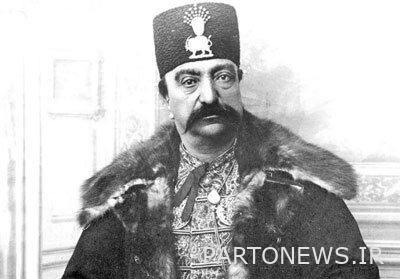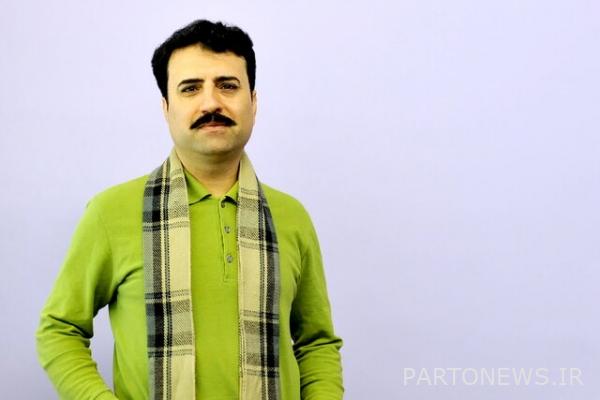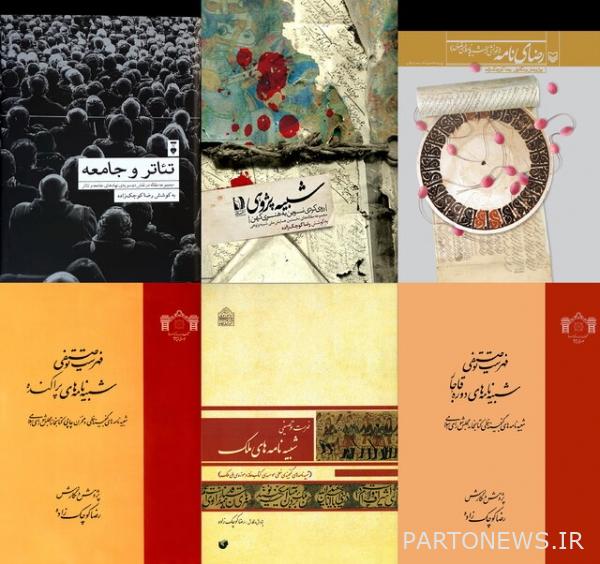The beginning of the sprouts of democracy in Iran from the similitude of government reliance

Reza Kouchakzadeh, director and researcher of performing arts, explains the difference between Reza Shah and Nasser al-Din Shah’s approach to imitation and explains that the sprouts of democracy in Iran began with the imitation of government reliance; Not the Constitutional Revolution.
Theater News Base: The researcher, who has been focusing on imitation research for two decades and has written research and reference books on the subject, explains why a kingdom like Nasser al-Din Shah supports imitation and builds on the support of the government – Iran’s largest and most efficient theater theater to date. In return, Reza Shah opposes this Iranian play and forbids its performance.
Kuchakzadeh at the beginning of the conversation, emphasizing the fertility of the art of similitude, says: Simulation in various historical periods (especially the Nasserite period) grows so much that it becomes a playful and up-to-date show. A show that is not historical and documentary, and all its characters and many of its costumes and tools are symbolic. For example, the behavior of Yazid or Shamar in each performance is reminiscent of which ruler or master oppressor, or similar to Ali Akbar in the burning of ISIS, recalls the oppressed and oppressed of each performance, or which part of the performance is in tune with the current events of society and emphasizes it. , Has made its implementation more attractive and effective for people.
Why did Reza Khan forbid similitude reading?
He described Reza Khan as a gifted emperor who understood the social function of imitation, and spoke about the reasons for his opposition to taziyeh: Acceptance of oppression prevents. He therefore stopped the similitude reading because he realized that the aspects of the similitude were aware of the rule of Jor at any time and place. Now, given the power we have over Foucault’s reading of politics and society, Reza Khan’s understanding of similitude reading at that time is astonishing. He did not object much to mourning and mourning, and even after the founding of the Constituent Assembly and in the first year of the monarchy, he transferred the mourning of Muharram Cossack to the support of the government and participated in it himself. But he confronted the groups of similes; Which shows that the story was not his anti-religion. He did not imprison religious scholars or fast-breakers and students, but many imitators were imprisoned during his time, paid large fines for their release, and even some of them were exiled. It is true that similitude reading has been the most political and influential performing arts in Iran so far, which in its heyday has changed the relations of power with society.
How did Western music start to simulate?
He points out: Let us not forget that similitude reading until the time of Reza Shah was more of a highly epic play and its main feature was not mourning. The mourning style of similitude spread in the post-prohibition period, overshadowing its epic aspect, to the point where its epic approach was more or less eliminated. One of the reasons was that many professional and knowledgeable imitators had lost or resigned and had no choice but to focus all their attention on the sound; Not the art of performance. The admirers’ feet, which opened in such a dramatic way, became a monologue of integrated mourning and lost its most important fundamental features; Especially when the microphone got into a similar performance and made the performers extremely lazy. That is why in current performances we see less of the art of similes (whether in instrumental singing or in gestures and acting and atmosphere or battles) and only sounds that are sometimes awkward and mere storytelling is enough. It is no longer important to create a performance atmosphere for our current simulators, nor is attention paid to proper action and movement, and there is not much fit between the simulator and the role. Even the audience is no longer noticed, which was once an important part of the simulation. These disturbances at the core of simulation performance took over its pervasive order, paving the way for the influx of Western music and its disproportionate instruments into our time.
Kuchakzadeh reminds: In the previous periods up to Reza Shah’s period, there were real clashes between groups, as we have seen in the travelogues of tourists and foreign ambassadors from the Safavid period to the end of Qajar, which referred to these bloody conflicts. One of the reasons for Reza Khan’s opposition to the religious ceremony was that he wanted to take the primitive aspect (according to his own view and at the same time to Ataturk’s approach in Turkey) from this ceremony; Especially at that time, beheadings, razors and locks were common, which were unpleasant both in terms of health and medicine and in terms of affecting the psyche of society, and Islamic scholars were opposed to these fabricated customs. But the most important reason for Reza Shah’s opposition to imitation was its effect on minds and the spread of epic and anti-oppression ideas among the people, and that imitators were the language of society in expressing current issues, which they presented in a quasi-historical and seemingly far from the present.
Nasser al-Din Shah and the construction of a government reliance
The author of the research book “Rezainehnameh” in response to the question why Naser al-Din Shah, unlike Reza Khan, built the government and supported the similitude reading, says: Naser al-Din Shah’s intelligence was in another dimension. During his rule, Iran’s relations with other countries expanded a lot, and he thought of extensive relations with other countries in the atmosphere of relative calm during his rule. He is the first Iranian king to travel to France (not to fight) and brings with him new tools such as hunting and photography cameras, each with its own culture. The goods that flowed to Iran at that time became known as “Mal Farang” and their number was increasing every day. But Nasser al-Din Shah gradually realizes that the tendency of the Iranian people towards these Western goods has exceeded; Just as the royal family bought more Persian fabrics than Iranian fabrics. The intelligence and foresight of this Qajar king led him to realize that if this trend continued, the country would soon reach a cultural collapse and be the only stronghold he found to defend Iranian culture at that time – which had both popular acceptance and great influence. It’s about the life of the nation – Iranian art is like a similitude that can remind a large audience of some of the rituals and elements that are being removed (including Persian words, Persian songs and moral behavior) from each performance, and the epic atmosphere and national spirit of the way. Closes on any westernization. Likewise, performing similes – according to its ritual roots – creates a unique opportunity for large audiences and from all walks of life for the relative homogenization of the people, which can be valuable for any totalitarian government. It seems that the construction of the government’s reliance and the support of the Qajar court for similitude reading was done in this direction.

He continues: On the other hand, for the first time, this king realized that if he gathers many people of the city in one place and he himself is present there and stands by them, other people will not see him in the opposite position, but him. In the position of parents, they know that he supports the establishment of such a popular religion. A poem from the poems of Mirza Mohammad Taqi Taziyeh Gardan remains, which he recited at the end of each assembly and prayed to Nasser al-Din Shah and his family.
“Oh my God! To the body and soul of Hussein! / To Ali Akbar, the young Hussein! Home! ”
Nasser al-Din Shah, a simulated emperor
If I am not mistaken, it is similar to the “assassination of Nasser al-Din Shah” in the parliament, in which the Shah has become the most important supporter of Imam Hussein and the founder of his memory and name; It is from a language similar to Imam. In this way, Nasser al-Din Shah, who was an eminent emperor, succeeded in proving himself to be the greatest supporter of imitation and thus expropriating this cultural current; Instead of standing in front of him. It might be interesting for you to say that some of the similitude poems that are still in the copies are from Naser al-Din Shah himself.
The author of three descriptive lists of Iranian imitations (from the manuscripts of the Majlis and Malik libraries), which are the only Iranian lists of imitations so far, points to the construction of a government reliance by Nasser al-Din Shah: The government’s reliance capacity was close to 20,000 spectators. At that time, the population of Tehran was about 120,000. Thus, the reliance of the government is the first cultural complex in Iran, which included a significant part of the citizens and alone built a stronghold against Western culture. Nasser al-Din Shah was more intelligent and friendly than other kings of his time, and if we have cinema and theater today, he owes it to him. If he did not allow the growth and spread of similitude and did not make an effort in this way and did not make people accustomed to watching, perhaps our nation would never have been able to accept theater and cinema.
Bridging the gap between the ruling class and the lower classes
The scientific secretary of the first national conference on “simulation research” goes on to say that Nasser al-Din Shah bridged the gap between the ruling class and the lower classes of society by building a government; The people at that time took refuge in the government, and the ritual of watching was formed there. Perhaps Nasser al-Din Shah understood that if the people and the ruling class became united and saw a show of religion with a religious approach, their distance would be reduced. In doing so, it transforms the base of similitude reading from a popular art to an educated but still popular art. You know that in the past, enthusiasts used to recite in a cross-sectional manner, and their daily profession was something else, such as agriculture, animal husbandry, and sales, but with this action of Naser al-Din Shah, people recited in a regular manner, which increased their skills and made them professional; In such a way that they were contracted and paid in advance for this work. Nasser al-Din Shah was so engrossed in the versions and performances of the similes that many times in his multi-volume memoirs, which are now slowly being published, we see that he mentioned the inaccuracies of the text or performance and sometimes praised the quality of the similes and mentioned their names. And these characteristics and perceptions and cultural support make him very special among the kings of Iran.
Government reliance; The initiator of constitutionalism and democracy in Iran
The director of the plays “Rashomon” and “The World of Isolation” in response to the question of whether it can be said that the foundations of democracy have been formed in Iran with the support of the government? “That’s right,” he says. I have discussed it in an earlier article. In my opinion, the germs of the Constitutional Revolution began with the reliance of the government; In the sense that with the erection of this building, the first foundations of constitutional thought were laid. Because it is here that the king symbolically tells the people that I hear you and I do not ignore you and he acts on it. So that after the end of the Ashura recitation in the reliance of the government, the people would directly sue the Shah and demand the release of the prisoners, and the Shah accepted the sanctity of the day of Imam Hussein’s martyrdom and sometimes even pardoned the execution or turned it into imprisonment. . Therefore, it can be said that the basis of the idea of democracy and right-seeking has emerged from the reliance of the government and its like-minded assemblies, and the idea of change from this Iranian Shiite media has penetrated into the minds of the people and flourished. It is interesting that the simile reading of the Nasserite period began to change, and many new versions and assemblies emerged in this period, which also consolidated the similar structure and form, and extended its thematic scope to issues far beyond the narration of Karbala and They moved closer to the performance community. As the dialogue in the similes was based long before the Constitution on the idea of democracy and equality and justice. Let us not forget that in that period, similitude recitation, such as the obligatory prayers, was considered more or less obligatory for all people, which led to the expansion of their presence, where there was contemplation and coexistence between the audience and the performers.
 Reza Kuchakzadeh
Reza KuchakzadehIt should be noted that Reza Kouchakzadeh’s research books in the field of simulation reading have been scarce for many years and publishers have not tried to reprint these books. The poor economy of the publishing industry in recent years has prevented Kuchakzadeh from publishing his new books.

///.

